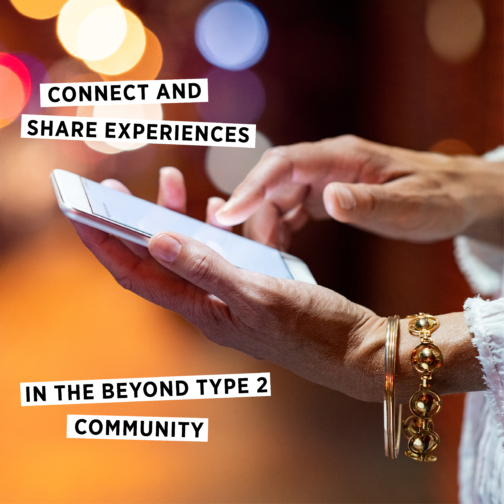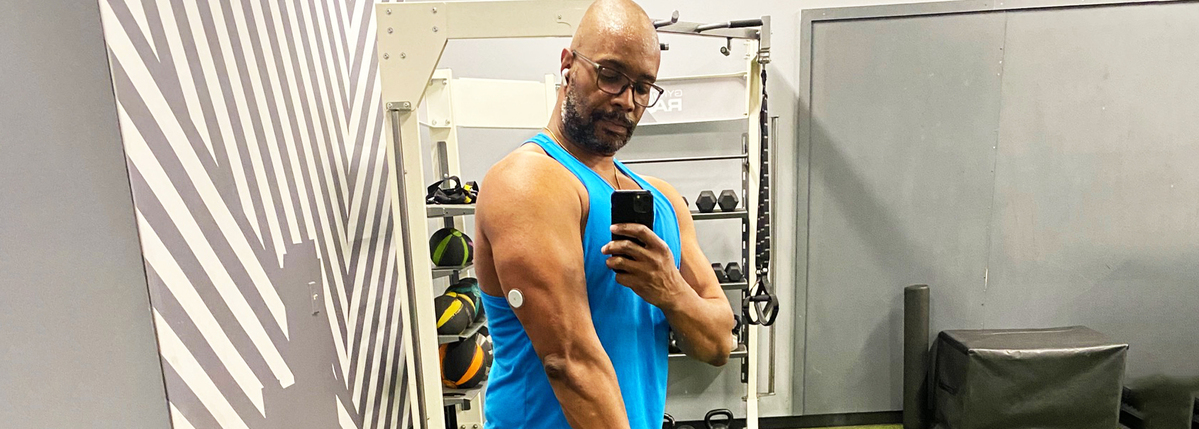Weight Lifting For The Win with Freestyle Libre
This interview has been edited and condensed for clarity.
With experience as a triathlon coach, Dave Winningham knew that once he was diagnosed with type 2 diabetes, that his life was going to change not only physically, but mentally. A mental “switch” went off for him—he would need to remain focused on his health for the rest of his life.
But Dave took this information in stride, and is now feeling better than ever. He stays active with weight lifting, running and walking. He wears a Freestyle Libre and has learned his blood sugars patterns over time.
With the help of his healthcare team, his Freestyle Libre (FSL) and the type 2 community, he found his strength again.
BT2: Hi Dave, Thanks for chatting with us! When were you diagnosed with type 2 diabetes? What were some of the symptoms you had?
Dave: In the spring of 2021, I had some health issues, like fatigue, numbness in my toes, depression and anxiety. I was getting up several times a night to use the restroom and I was dehydrated all the time. I couldn’t figure out what was going on so I went to the doctor who ran a full panel of blood work. That’s when I was diagnosed with type 2 diabetes.
What changes did you make to your everyday life after you were diagnosed?
I was very upset. I was a guy that worked out all the time, but then COVID-19 hit. For the first two months, I remained active. But slowly, I became less and less active and the weight started to pour on. I was getting less sleep and binge eating. I kept telling myself I’d fix it. So, when I found out I had type 2 diabetes, I immediately went back to my healthy lifestyle. I started preparing my meals instead of eating out and being more active, with either walking, running, or weight training. I had the skills and knowledge, I just needed to apply them.
How was the transition?
It was difficult at first. Even with my personal knowledge as a triathlon coach, I had to make the mental switch that I’d have to be focused for the rest of my life. I also had to forgive myself for having diabetes, which took a long time to do. I was doing what I needed to do to heal my body, but mentally, I was struggling with the past decisions I made and how to let them go.
We love seeing your gym pics on Instagram! Do you prefer weight lifting over cardio? Why or why not?
Exercise is an extremely central part of my life now. I was a triathlon coach in the past, and weight lifting has become one of my hobbies. I prefer both equally, I just like making my body move.
How did you get into strength training? What are your favorite strength training exercises?
I lean towards weight training. It’s something I wanted to do when I was younger, but put other things in front of it, like running and cycling. In 2010, I dedicated myself to strength training, and grew to love it. I love getting stronger! My favorite body part to hate working out (LOL) is my shoulders, because I like the way my body looks. The areas that I train that keep my blood sugar stable are back and legs because they’re the largest muscle groups. I like doing walking lunges for legs and rows on back day.
What differences in your blood glucose levels do you notice when you lift weights versus doing cardio?
For me, weight training produces the most long-lasting results, versus running. I think tracking my blood sugar has helped me find the balance. I use the Freestyle Libre 2 and track my activity. This helped me learn the best times of day to exercise and also how food affects my blood sugar when I exercise vs. when I don’t.
For people who want to learn how to strength train, what advice would you give?
Start out slow. Any movement will produce positive results. Remember, as a person living with diabetes, all stress can have an adverse effect on our blood glucose levels. When it comes to physical stress, we need to give our bodies time to adapt to the strain we introduce. So, start out with just short workouts, maybe 20 minutes of strength training, with two to three sets per exercise (like this one!). Then, build on that foundation. Consistency is key. Your body will respond to what you do over time.
How did you get started with the Freestyle Libre 14 day system?
I was fortunate to work with a great endocrinologist, Dr. Bhakti Paul. She doesn’t just treat the disease. She gives me the knowledge and tools to manage my diabetes more easily. We were a good match. My advice? If you feel your endocrinologist isn’t a good fit, get another one! She taught me what my body was doing, and how to track it, using the Freestyle Libre 1, and then eventually FSL 2.
What were some changes that you noticed once you started using FSL?
I learned the cycles of my body. For example, my blood sugar is highest in the morning, the Dawn phenomenon. I learned my blood sugar wants to go down in the early evening. With this knowledge, I started to learn my patterns and what foods were best for me to eat at those times, and how they affected my blood sugar.
Do you think more people with type 2 diabetes should have access to devices like FSL?
Absolutely, and how to use them. I think most people are learning to treat the disease. So, here’s my glucose reading, do I need medicine now or should I wait until later. The benefit of these devices is they give you so much more information. You can track what you’re doing—food, exercise, etc. You can learn how different foods affect your blood sugar. You can understand your natural trends, then react accordingly. Using the power of data is how I reduced my A1C from 12.2 to 6.3 in under a year.
What are your favorite features of the FSL?
My favorite feature of the Freestyle Libre 2 is the Libre View portal. I can log in online and look at my trends over time. I also like the glucose management indicator (GMI) reading, to let me know, long term, if I’m on the right track.
What are your thoughts on ‘time in range’ as a metric compared to A1C?
For me, they’re two different but relevant readings. Time-in-Range helps me manage my blood sugar on a daily basis. A1C lets me know if I’ve reached my goals in how I manage my blood sugar, over time, long-term.
What are some words of inspiration to other people with type 2?
My advice for others with type 2, is that no matter your circumstance, no matter how frustrated you are, you can take care of your body while you’re feeling those feelings. You can manage your diabetes. You just have to be deliberate about it, while you’re feeling what you’re feeling. There’s more to life than the food we eat. Learn more about why diabetes occurs. Then, make choices that help you get the results you want. You can do it!
Follow Dave’s journey on Instagram.
YOU ARE NOT ALONE. JOIN THE BT2 COMMUNITY!
A place for everyone impacted by type 2 diabetes to share their stories, get connected to one another and find resources on topics from daily management to mental health. Now with the support of our friends at the American Diabetes Association, get instantly connected to other people who just get it—ask questions, share successes, vent about it in a safe and respectful platform designed specifically for people impacted by type 2 diabetes (T2D). Here you’ll find a collection of practical ideas, stories and resources in both English and Spanish, for not only living with type 2 but thriving with it.
Were you recently diagnosed? Learn how to find the mental health support that you need here and how to find a mental health provider here.
Want to share your story with us? Share your story or contribute to our other content here.






